What are the things in your home that bring you joy? For us, they are often objects that a seem a bit superfluous or “extra” but just give us a smiley feeling every time we see them. After all, isn’t that the whole point of decorative objects? They exist to embellish our spaces with colors and shapes that conjure feelings of serenity, energy, happiness and delight.
It’s a serious bonus when those joy-sparking objects offer functionality, as well. That’s what hooked us about the shelves and planters from Holly Jean Studios. These colorful, whimsical handcrafted objects are a treat to behold, and all the better when used to display plants and special objects. Their sweet shelves create a space to transform things, like flowers, fruit and art, into miniature altars.
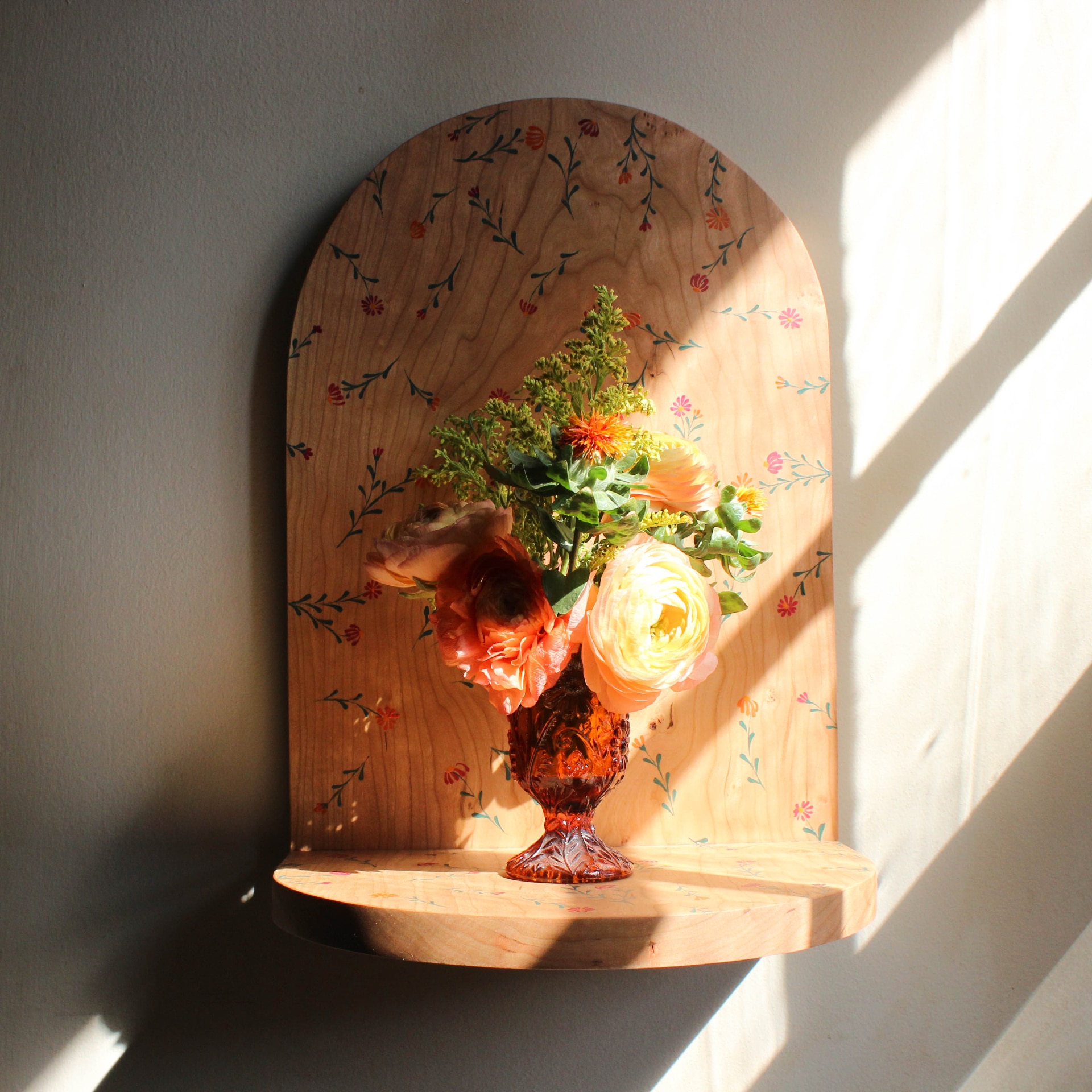
This quirky home goods purveyor is the project of Corinne McFadden and Nick Lalik, two PA-based makers who launched their business in Philadelphia right at the start of the pandemic. We enjoyed a convo with Corinne about Holly Jean Studios and are excited to share their story with you!
PA Eats: Take us back to the beginning: How did Holly Jean Studios come about?
Corinne McFadden: Holly Jean Studios is very much a reflection of myself and my fiance Nick, and how we work together. We’ve always had studios to make whatever we dreamed up. Some friends of mine asked us to make some things for a pop-up shop in Philly in December of 2019, and we sold almost everything we made. So I figured we could make a website and sell this and that, it would be something small.We launched the website March 31, 2020, at the beginning of Covid. And then, since we couldn’t go to work, we just kept it going as something to do. We kept selling out. When the lockdown was over, I never went back to work full-time for anyone else. Holly Jean has been my full-time job since April of 2021. And Nick just gave his notice at work to do this full-time with me now! I am so excited.Also, our name comes from Holly, who was my dog, and Jean, my mom’s middle name.
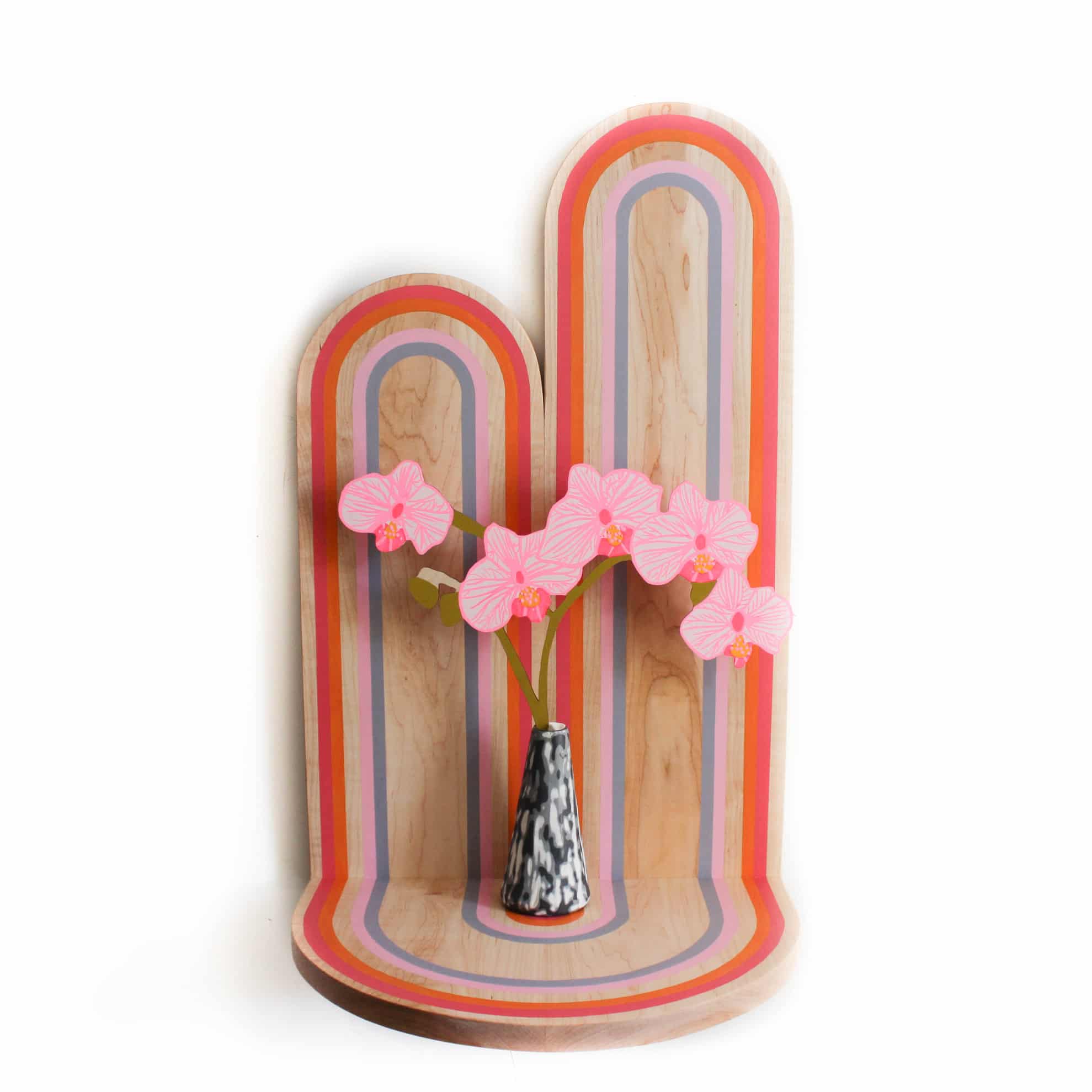
Forever Flower orchid by Cosmic Peace Studio, black and white ceramic bud vase by Joshua Hebbert
Are you originally from Pennsylvania? How did you two meet?
We are both from PA! I grew up in the Lansdale area, and Nick is from Allentown. We both went to Temple University. He went for architecture and I went for my Bachelors of Fine Arts. But we didn’t meet there! After college, we both worked in Philly doing high-end furniture fabrication: I was a glassblower making lighting, and went on to make ceramic tableware and to do some illustrating. Nick has primarily focused on 3-D modeling solid wood furniture. It took one of our mutual friends to introduce us, even though we’d been so close to each other for so long. After living in Philly for years, and after the pandemic, we decided to move back to the Lehigh Valley to be nearer to our family.
What do you like about living/working where you are?
The arts community in the Lehigh Valley is incredible. Nick’s family has been a big part of the arts here, and we were jealous, so we moved here to be a part of it, too! I think Allentown is pretty awesome. I absolutely love the park system here that runs through so much of the city, and it is a super-affordable place to live. We bought this old fieldstone house, probably from the late 1800s, that would’ve cost so much more anywhere else. I love this house so much! It needs a lot of love and care, but we’re both willing and able to do it. And I have a big yard to garden here! Plants have been such a huge part of our inspiration.
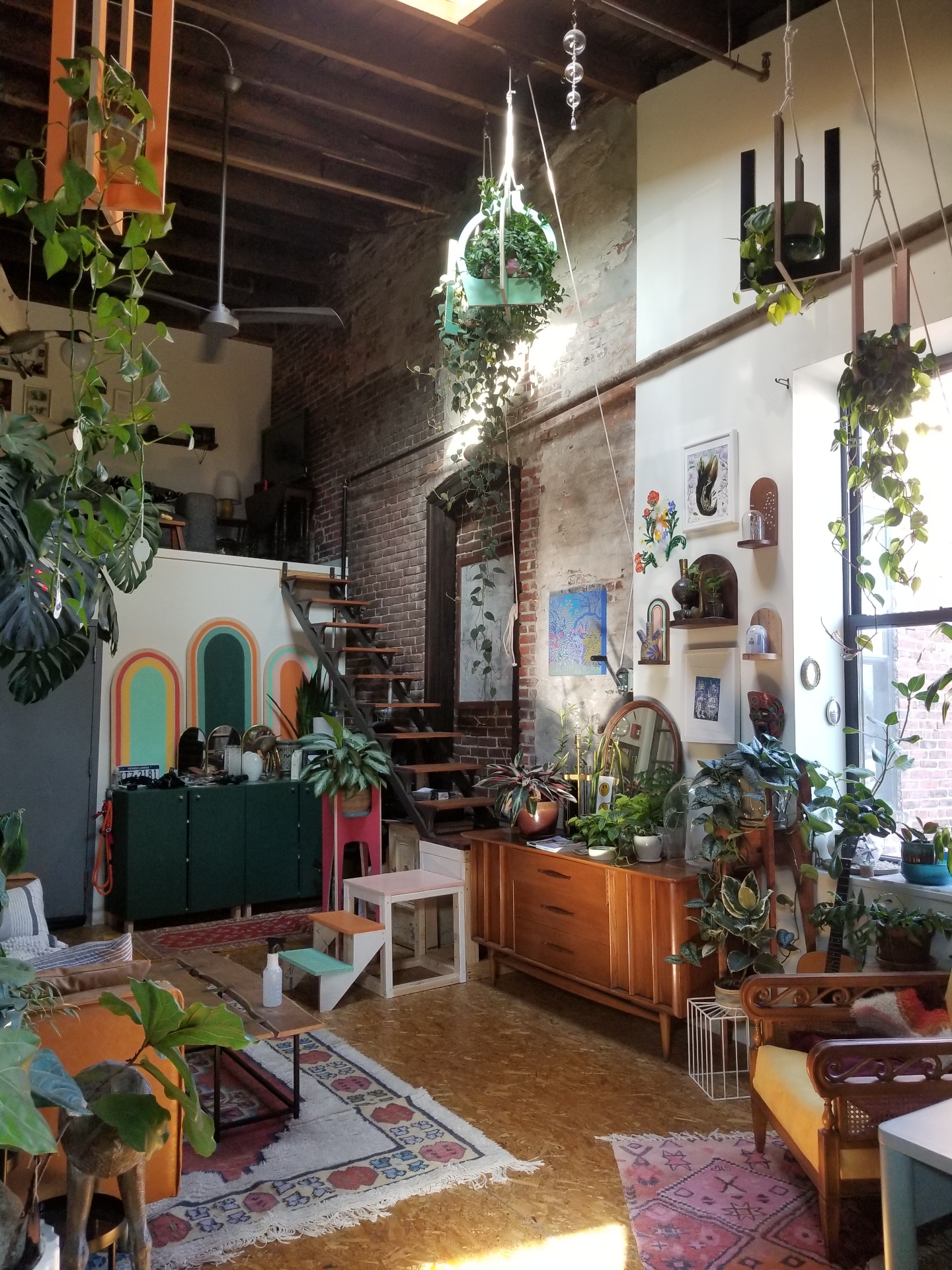
Holly Jean Studios home/workspace
What is your production facility like?
Right now, every room in our house is our “studio.” The whole house is pretty much home, studio and business. Like, there was a lathe in our kitchen for a few months while we poured a concrete floor in the garage. There was also a bandsaw being used in my office. I think most people walk into our house and go, “What is going on here?” The combination of artwork, plants, machines and furniture in every room is actually wonderful. I think about homes like works of art, so working on the house, in the house, is a part of who we are as artists. We are also in the process of turning the separate two-car garage that came with the property into the most wonderful woodshop.
Have you always known that the craftsperson’s life was for you?
I have been super-lucky to have supported myself by making things for the last 10 years for lots of different people and then for myself. I always knew I could not handle a regular job. Nick, on the other hand, worked for an architecture firm, and realized it wasn’t something he wanted to do. The transition of modeling buildings to furniture was natural for him. He has absolutely thrived thinking about furniture and design through the lens of someone taught to see a bigger picture. His mind is so playful and complicated at the same time.
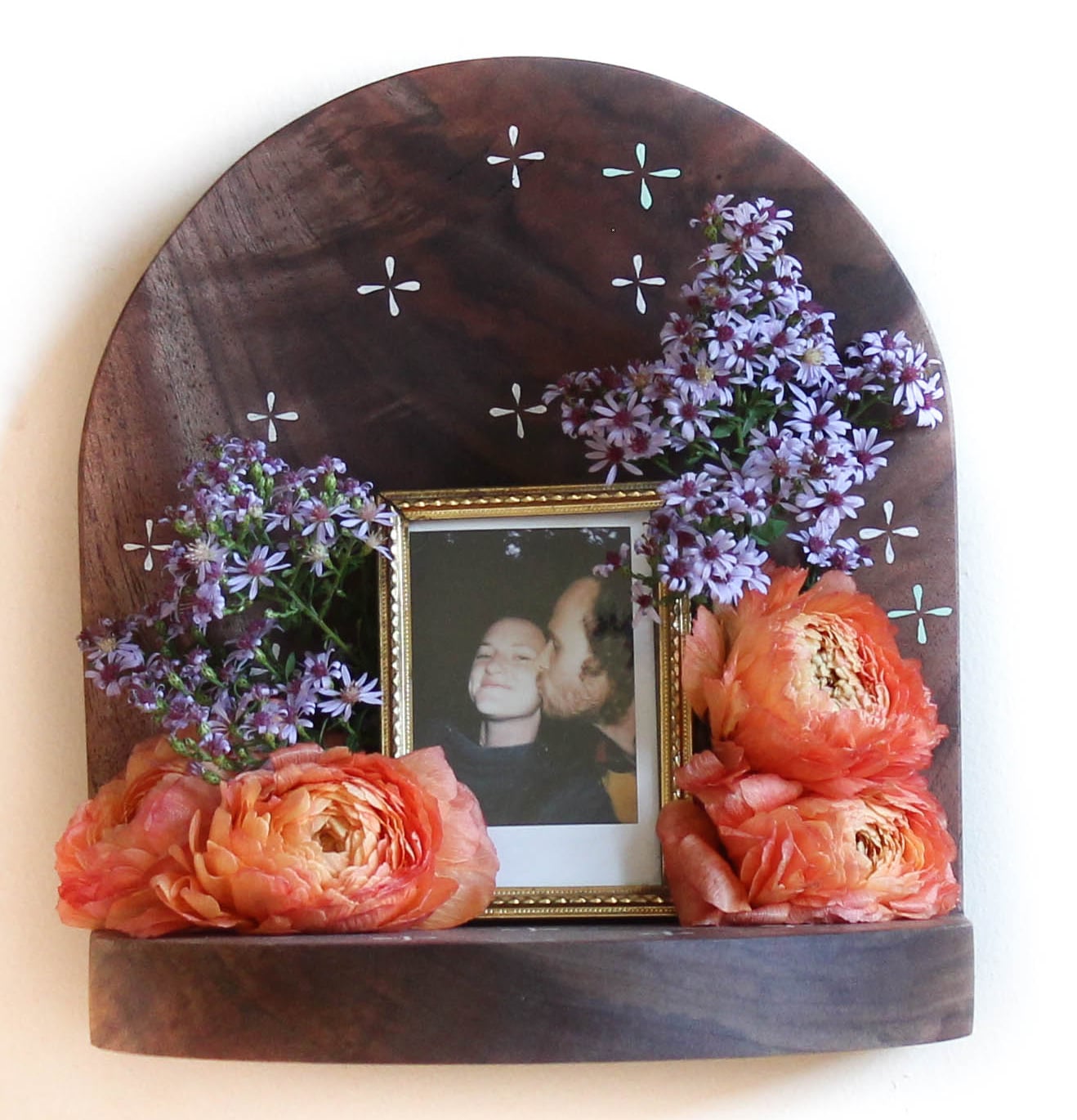
Corinne McFadden & Nick Lalik of Holly Jean Studios
How do you make your shelves and other pieces? Do you see in your mind what you want to create, or sort of make it up as you go?
Our minds work in completely opposite ways, which makes Nick and I a really good team. I work by slapping things together. He likes to methodically think the whole thing out. The process starts with the wood. We make a trip to our favorite lumber yard and we pick out whatever is inspiring to us. When we get the wood home and I start to cut it up to make the shelves, everything is a completely different size, because I’m really looking at the material and responding to it. I’ll cut each shelf, taking into consideration what I want to highlight or omit in the final product. I prefer working in this way because there is very little waste.
It might make more business sense to make one product with a set design, but I enjoy using off-cuts of wood that are otherwise neglected. So then we make a ton of shelves, and then I paint on them what I think will benefit each piece. Sometimes I have shelves that sit around for months because I want to do right by them. Shelves with really nice grain get simpler patterns or illustrations; woods with lots of deep colors might get colored arches that pull from those natural features.
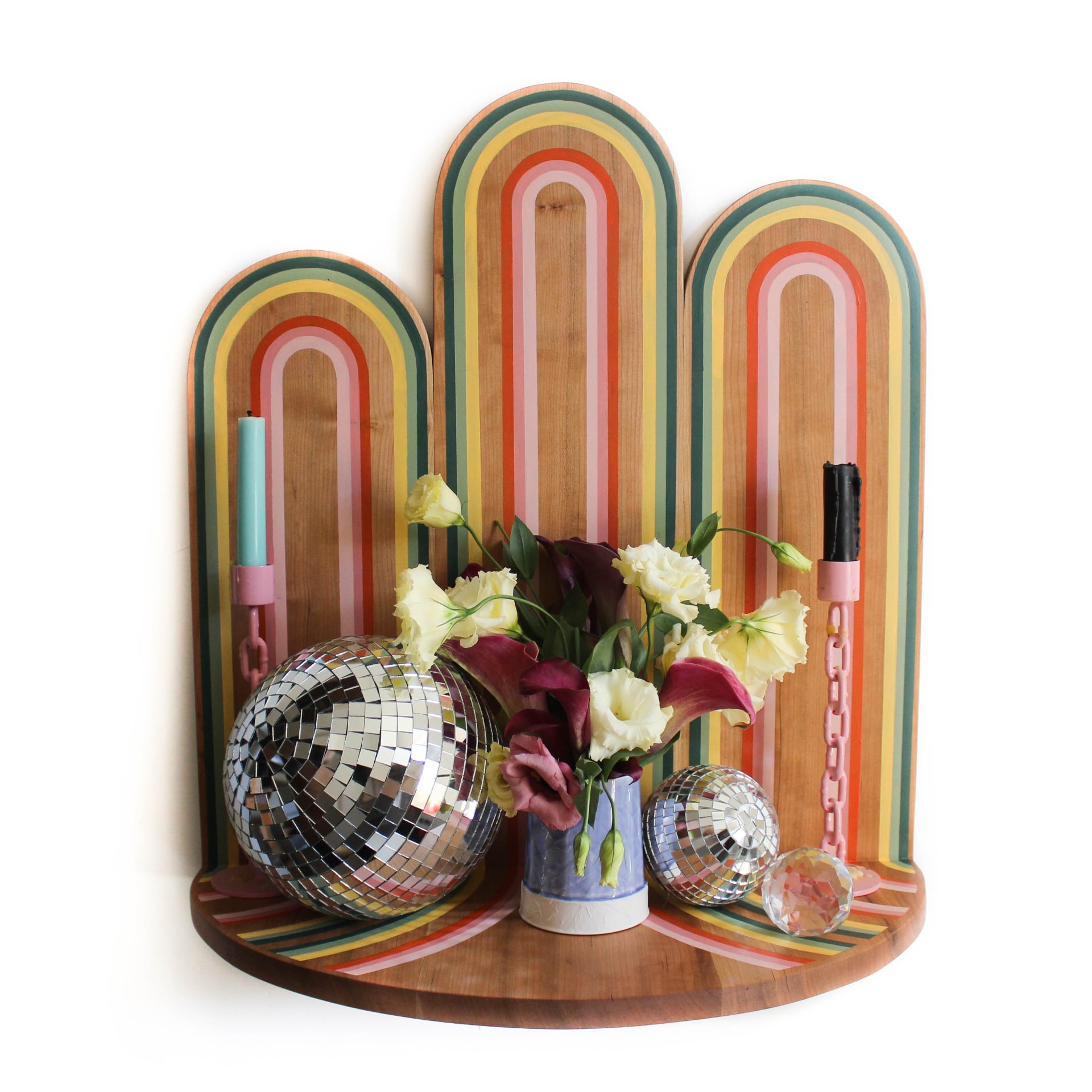
Chain candle holders by Boonies, blue-and-white porcelain cup by Will Preman
Why do you choose to make shelves and plant hangers when you could probably make ANYthing?
The shelves are so important to us. We started making them as a way to honor our friends’ artwork around our house; little shrines to give handmade objects a specific resting place. We make them because I just love the idea of people being able to curate what should be shown off or idolized in their own homes. The plant hangers and stands came from us having lots of plants in this crazy warehouse apartment where we used to live. I asked Nick to make them for me, so I could hang plants from the 20-foot ceilings on a pulley system. It was so magical and fun to make these things for our own home, and then people wanted to buy them too!
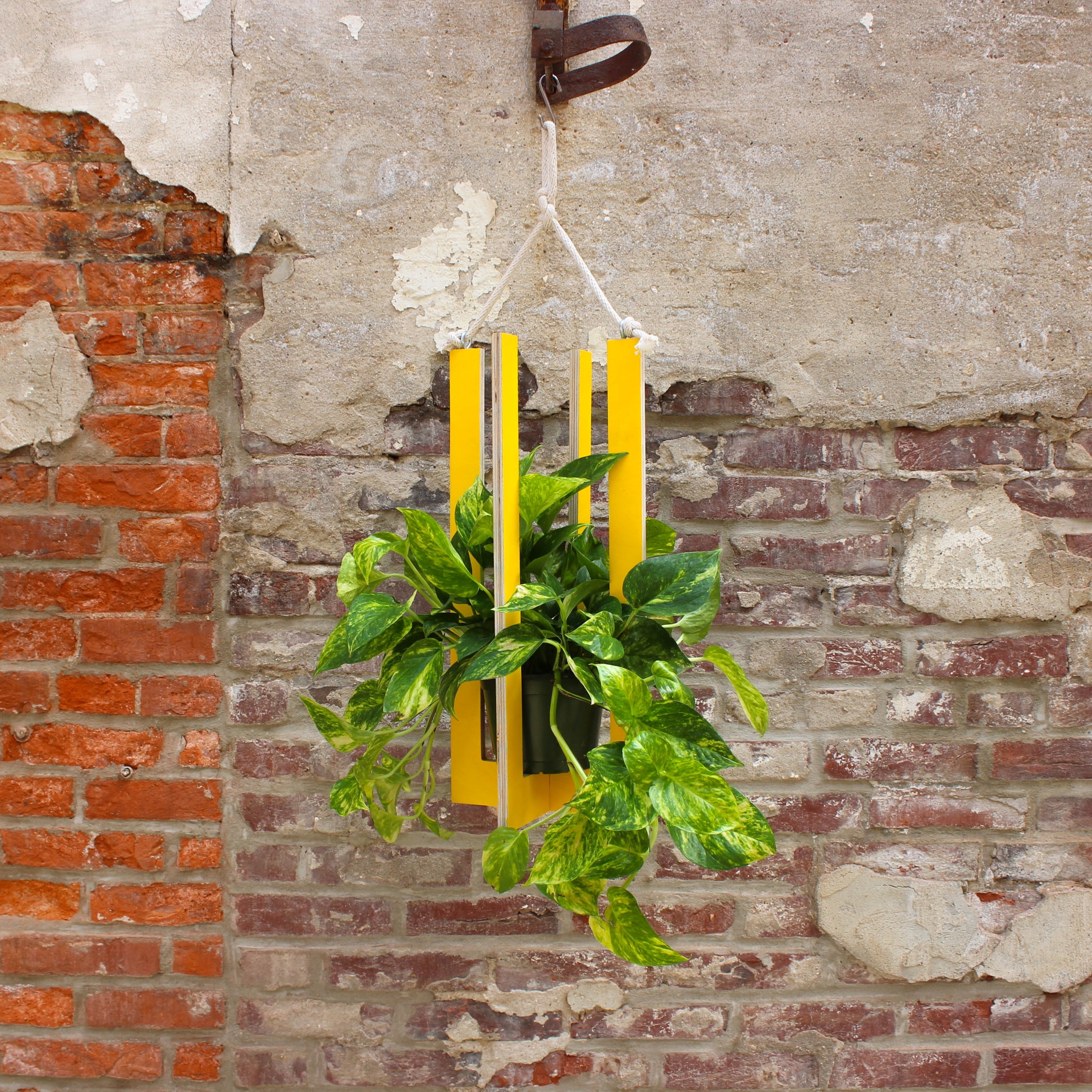
What guides and influences the aesthetic of your projects?
For me, it’s all about color and pattern. I love how different colors can look in different places or next to other colors. I think most of my shelves reflect playing around with color theory. I also love composing a shelf inspired by other people’s artwork, designs that push and pull and become part of each other, and collaborating, too: making shelves for specific pieces, and selling them as sets that were made to be with each other. Nick is more of a form-follows-function person. He likes making things that work and are simplistic. The maximalist chaos comes from me.
Do you ever think about what happens to your pieces once they’ve been purchased or gifted? Are there any that you couldn’t let go of?
Oh, all the time. I remember each shelf, and I’ve probably made over 500 different designs. What is so amazing about social media, though, is that now I have these relationships with people who have purchased our work and send or tag us in pictures. I cannot express how much that means to me to see these things I have put so much thought into being used and being a part of peoples’ homes. That feeling is incredible. I have a few I cannot let go of. They’re mostly prototypes, or ones we made and where the combination of wood, color or pattern is perfect. Sometimes I’d like to keep more, but when I see them hung up in someone else’s home, I’m glad I let them go.
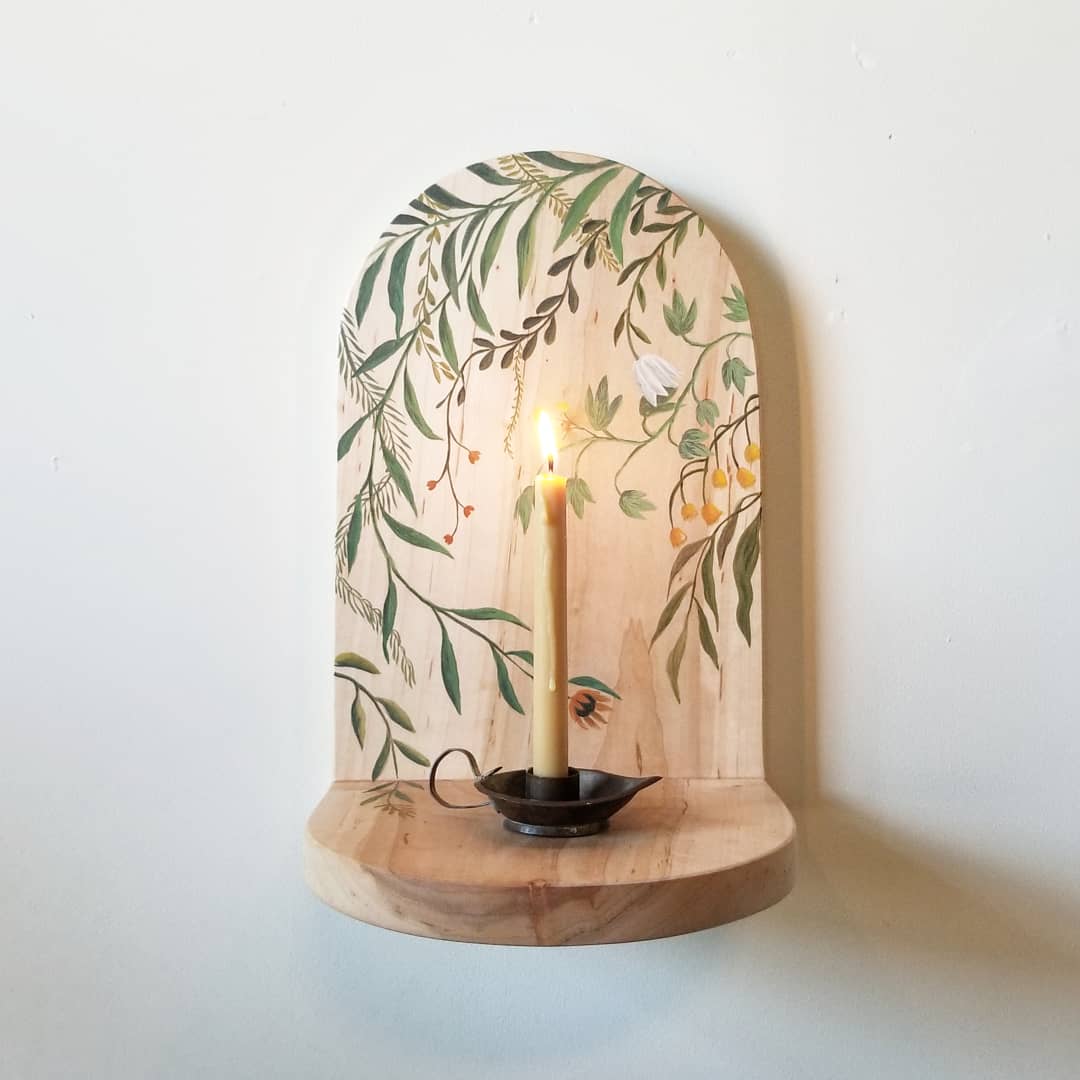
Holly Jean Studios x Meg McIntyre
Do you see yourself doing this far into the future? Anything you hope to grow into in the next few years?
Almost every decision we’ve made about Holly Jean Studios has been flexible and impermanent. Right now, I love making things by hand, but we also understand that this could be an entirely automated process. I think the vision for the next few years is to keep transforming into whatever it is we want to be making. We have ideas for furniture we’d like to make, and even a design-build model is something we’d enjoy doing down the line. Whatever it is, I’m sure it will be so fun, wild and colorful!
- Photos: Courtesy of Holly Jean Studios
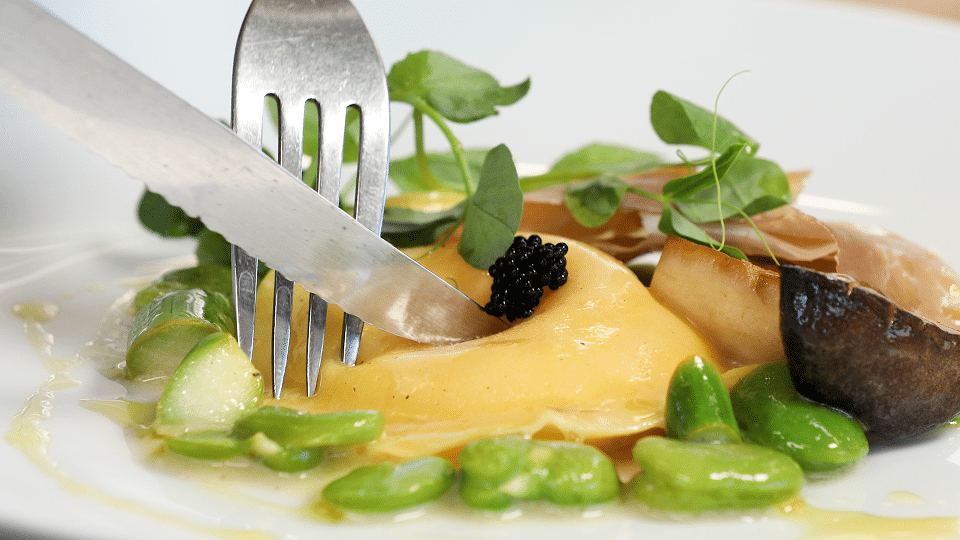
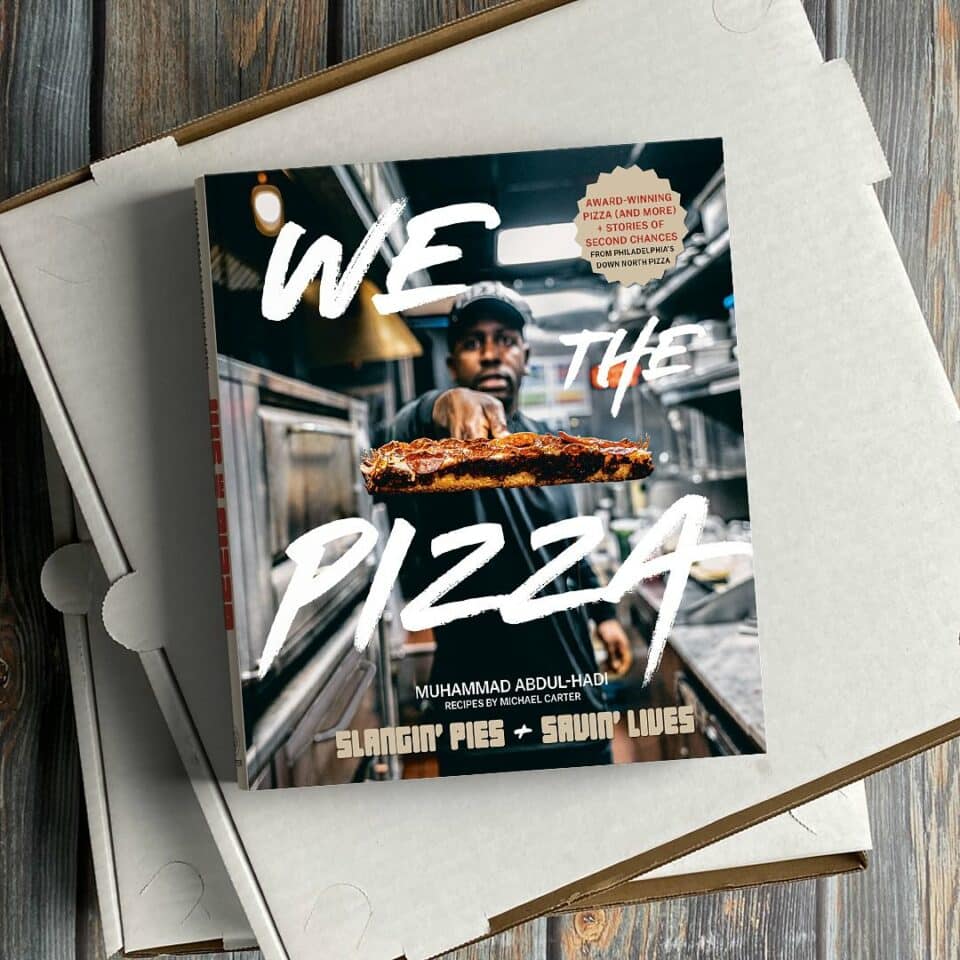
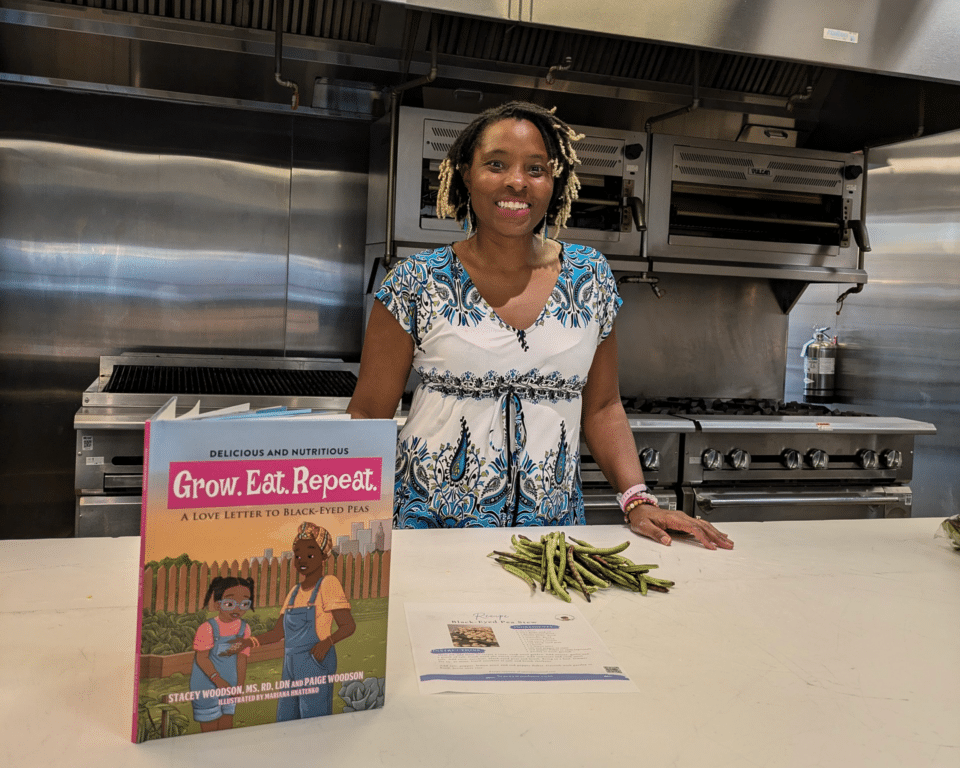
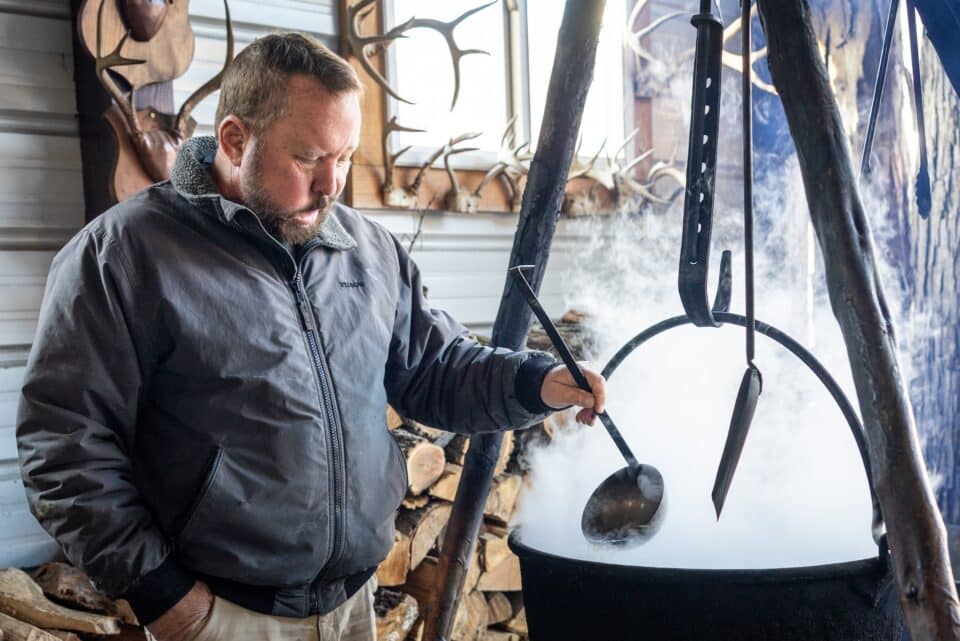

One Comment